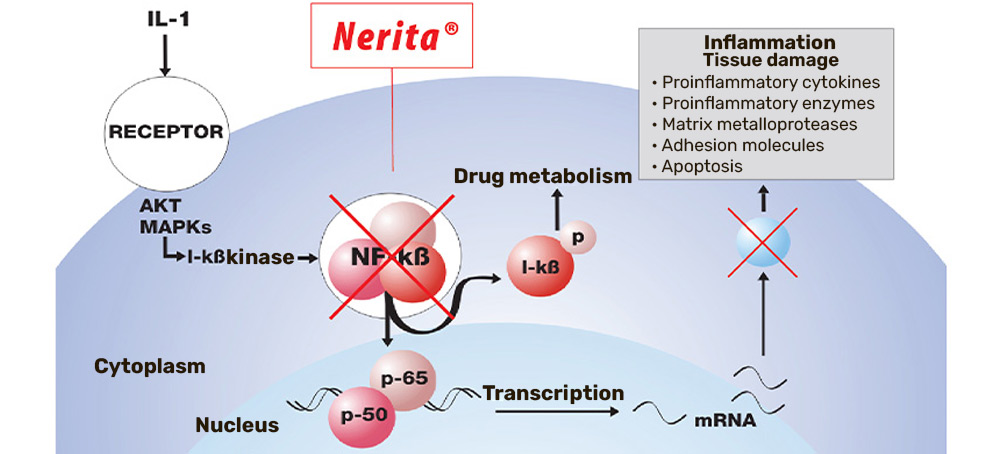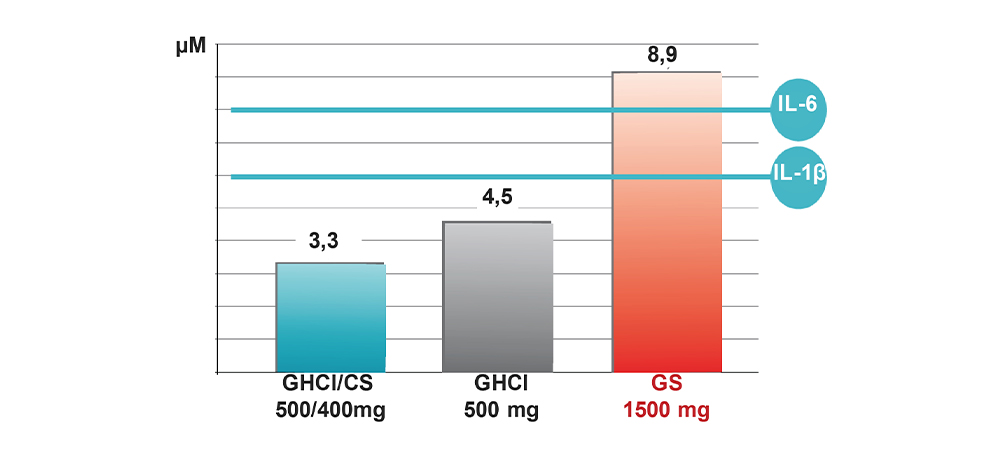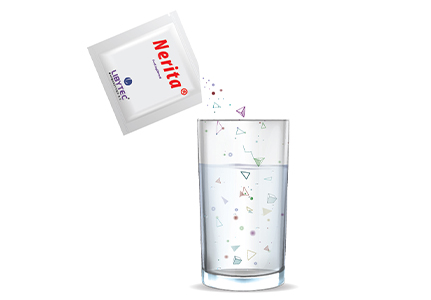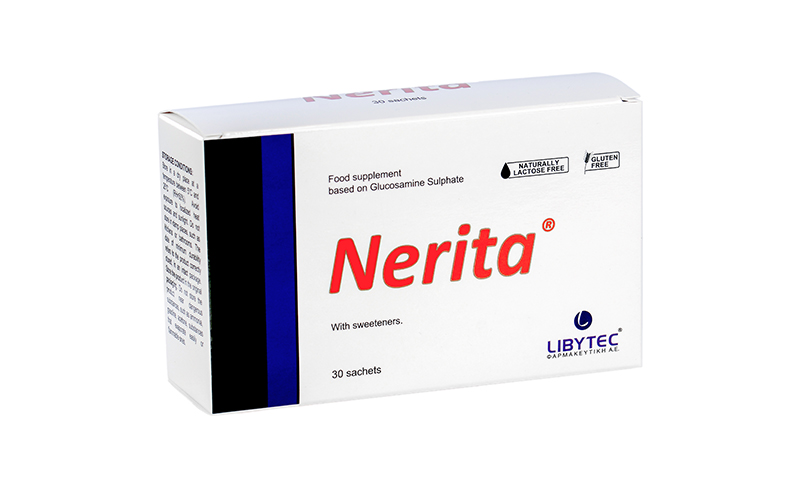Nerita®
For pain-free movement!
Nerita®
1500 mg glucosamine sulfate
Effervescent powder – dosage one packet per day
It’s complex mechanism of action achieves a threefold effect:
- anti-inflammatory effect
- anabolic effect
- anti-catabolic effect
The mechanism of action of glucosamine sulfate in a dose of 1500 mg
is based on the inhibition of the IL-1 intracellular signaling, that is, the inhibition of IL-1-induced gene expression:
- inhibition of the synthesis of phospholipase A2 and prostaglandin E2
- inhibition of the formation of superoxide radicals
- inhibition of nitrogen monoxide synthesis

SUPERIOR PHARMACOLOGICAL EFFECT
Glucosamine sulfate in a single daily dose of 1500 mg achieves the required average inhibitory concentration at the site of action necessary to block IL-1.

NERITA® – symptom modifying effect
- four-week administration is as effective as administration of the NSAIDs
- with further use, lasting 12 weeks, there is an improvement in symptoms – pain and limited mobility (in contrast to the NSAIDs)
- 12 weeks (3-4 months) optimal short-term symptomatic treatment
- the effect of the treatment lasts for up to two months after discontinuing the treatment (unlike the NSAIDs)
- synergistic administration in combination with the NSAIDs is recommended in the first two weeks of treatment
- side effects are no different from placebo
The combination of symptomatic and structurally modifying effects suggests that glucosamine sulfate in a dose of 1500 mg has a disease-modifying effect!
DOSAGE AND ROUTE OF ADMINISTRATION
- recommended dosage: 1 packet per day
- dissolve the contents of the packet in a glass of water, stir until dissolved, and drink immediately after dissolution, preferably with or after a meal

Osteoarthrosis
Osteoarthrosis is a chronic, degenerative joint disease accompanied by chronic pain, limited mobility, and difficulty in performing daily activities.
Inside the joint itself, there is deterioration and loss of articular cartilage, affected bones become denser just below the cartilage, and bone spurs–the extra bits of bones that feel like hard lumps–form around the affected joint.
The disease is affecting men and women equally, although after the age of 55 it affects women more commonly.
Degenerative changes in the joints can also occur in people between the ages of 15 and 35. These are most often the result of injuries to the ligaments of the knee (anterior cruciate ligament-ACL tear, meniscal injuries) and the result of mechanical overloading of joints in work or in sports, especially if played on hard courts and surfaces.
The main symptoms of osteoarthrosis
- pain–the joints may hurt during or after movement, whereas the pain will ease and be relieved upon rest
- stiffness–joint stiffness might be most noticeable upon awakening or after being inactive (lasting less than 30 minutes)
- a feeling of instability in the affected joint
- loss of flexibility–inability to move the joint through its full range of motion
- restriction or lack of ability to do certain activities
Clinical signs
- tenderness–the joint may feel tender when light pressure is applied to or near it
- a grating sensation when using the joint, popping or crackling might be heard
- high bone mass and density (BMD) and soft tissues masses
- limitation of movement and/or the movement is painful
- joint deformities
Most commonly, the hip and knee joints are affected (gonarthrosis and coxarthrosis). Less often, the small joints of the wrists, hands, and fingers, the spine and the shoulders may also be affected by osteoarthrosis.
Diagnosis
The diagnosis is usually made based on the symptoms and the signs of the disease, an X-ray, and a laboratory blood test and urine test to rule out other joint diseases (rheumatoid arthritis).
Treatment
The treatment of osteoarthrosis is complex. In the first place, it involves:
- maintaining optimal body weight
- daily exercise
- use of orthopedic aids (crutches, canes) or shoe inserts and insoles (orthotics)
- and physical therapy treatments.
The pharmacological treatment involves:
- administration of drugs that have a symptomatic effect to relieve pain (analgesics, antirheumatic drugs), and
- administration of chondroprotectors and viscosupplementation that can both relieve pain (symptomatic effect) and slow down the progression of the disease, and this is especially true of the SYSADOA (symptomatic slow-acting drugs for OA), which include glucosamine sulfate, chondroitin sulfate, and hyaluronic acid.
Finally, it should be noted that glucosamine sulfate in a dose of 1500 mg per day is a chondroprotector that has been assessed by the professional circles, in numerous guides of European and other international associations worldwide dealing with osteoarthritis (EULAR, OARSI, ESCEO, ACR), as the therapy of choice with the highest level of evidence and degree of recommendation.
The very same dose of 1500 mg of glucosamine sulfate is found in the NERITA® product.
Pišite nam
Mosorska 9, 11000 Beograd, Srbija
Vemax011 Pharma doo predstavništvo Severna Makedonija - Bul.Kuzman Josifovski Pitu br. 26/2-4, Skopje
Vemax011 Pharma doo predstavništvo Crna Gora - Topliški put 1, Budva
Vemax011 Pharma doo predstavništvo Bosna i Hercegovina - Vlakovo 252, Sarajevo
+381 (0)63-103-00-08
office@vemaxpharma.rs
Vemax Pharma - vaš regionalni partner na putu do zdravlja!

